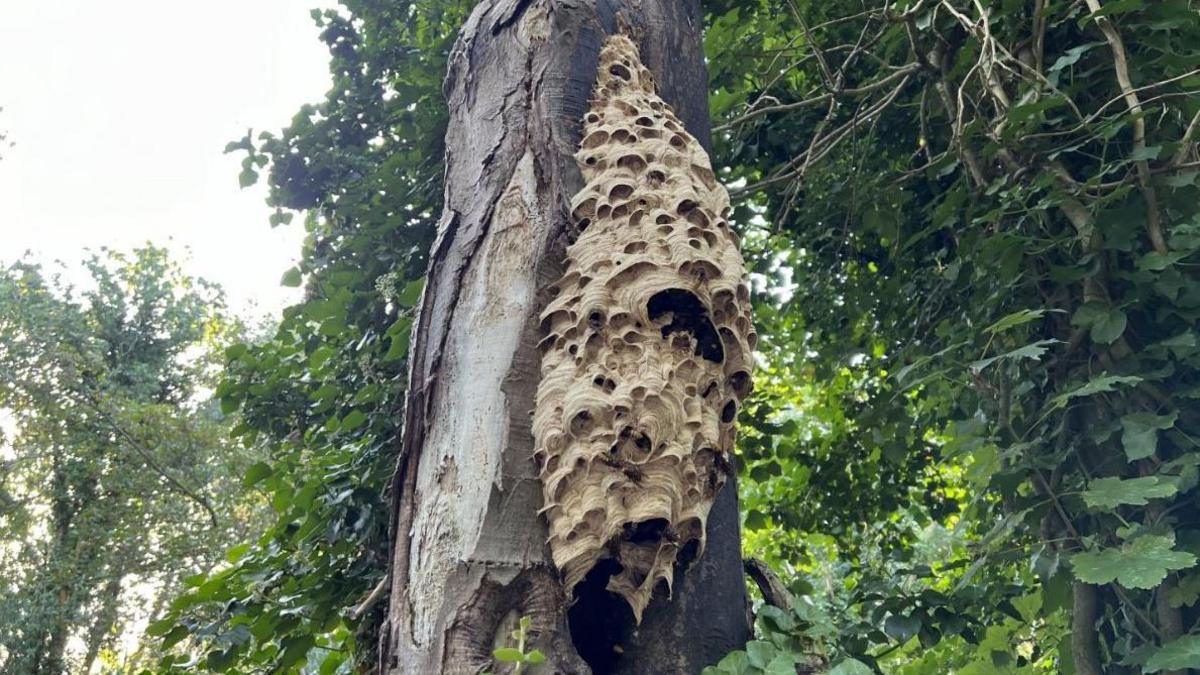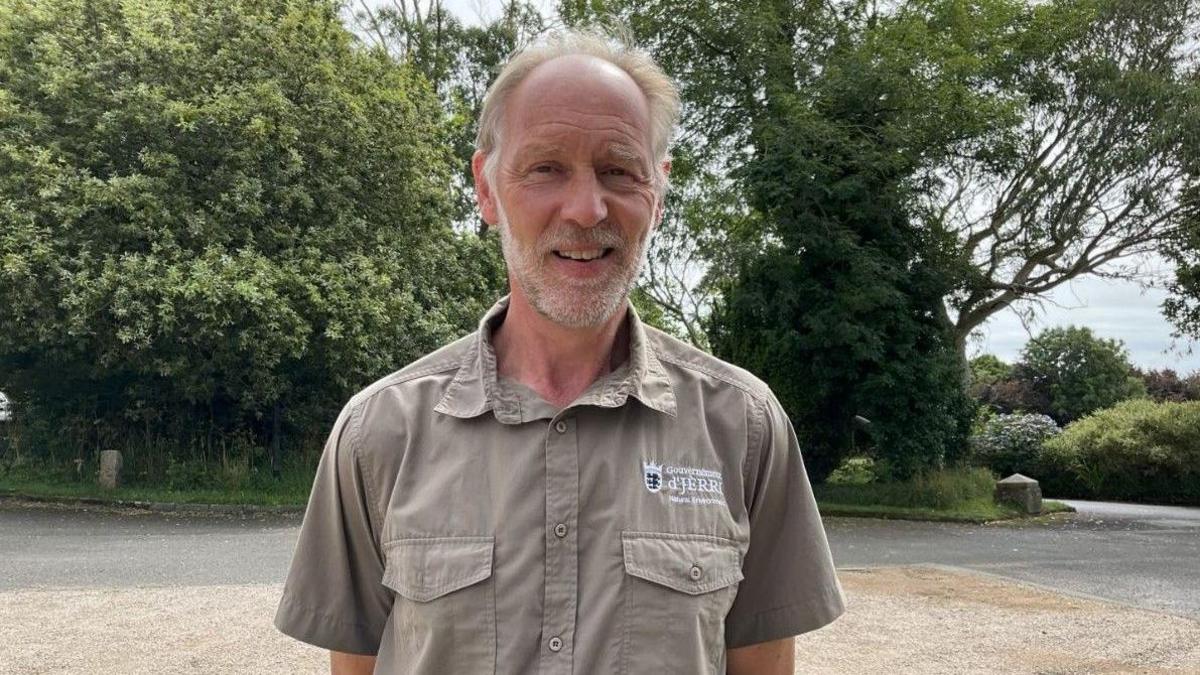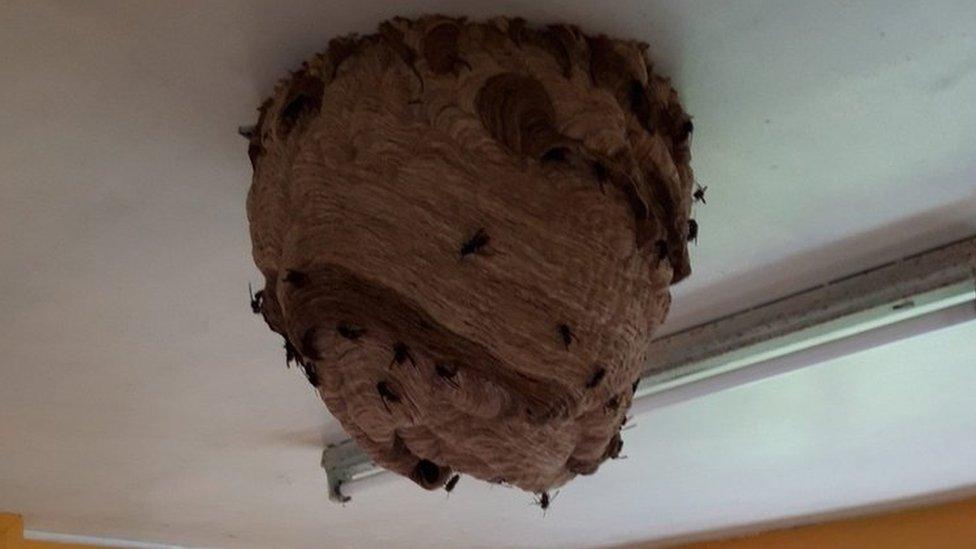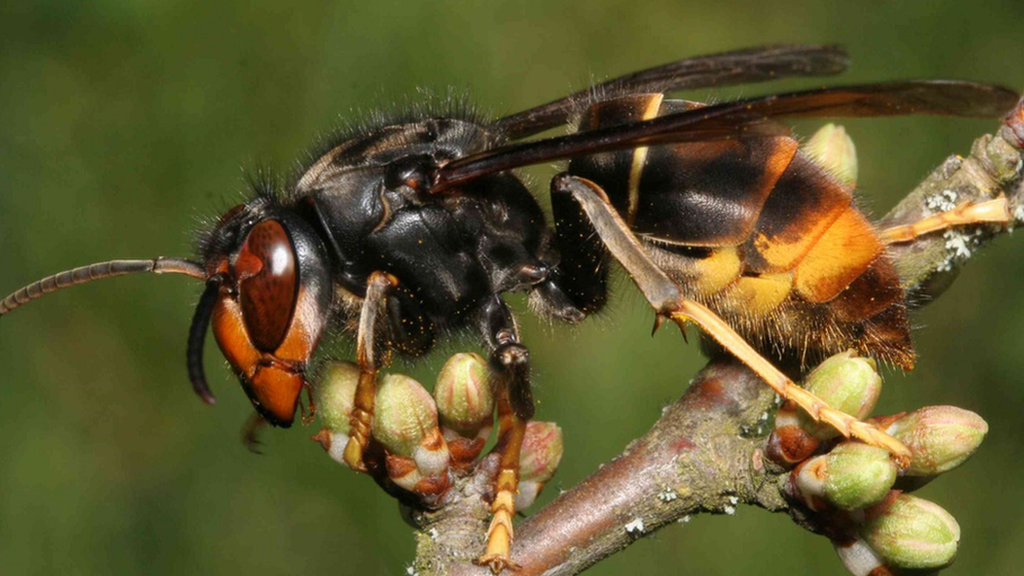Appeal over identifying invasive hornets

Alastair Christie said people did not need to worry about visiting the valley and to admire the European hornet's nest from a distance
- Published
Islanders have been asked to "familiarise themselves" with the difference between native and invasive hornets following false reports.
Alastair Christie, who is senior scientific officer dealing with the invasive species at Natural Environment, said he had received a "dozen reports" of Asian hornets that were actually European hornets.
It led the team to install a sign near a European hornet nest at Fern Valley in Jersey to help people distinguish between the two insects, he added.
Mr Christie said since the instillation, there have been "fewer reports" and he encouraged people to "pay a little more attention to them to avoid the flood of misidentified Asian hornet reports".

Alastair Christie said there has been fewer reports of Asian hornets after installing a sign informing people of the European hornet nest at Fern Valley in Jersey
He explained an Asian hornet was dark brown with a yellow/orange band, while a European hornet was predominately yellow with thin black stripes.
He said there was two stages of nesting for Asian hornets which includes in early season when they nest low down in sheds, hedging and brambles.
"Later in the season they often (but not always) move to the very top of a tree nearby (10m to 30m high)," Mr Christie said.
While European hornets usually nest in a cavity such as a hollow tree, chimney or roof space, he added.

Alastair Christie said they put the sign up at Fern Valley to raise awareness of the European hornet nest but also to tell people not to report it
Talking about the European hornet's nest at Fern Valley, he said the nest had been "gradually growing in size", adding the non-invasive species were having a "strong year".
"When people see the nest, they think big, stingy insects and have been reporting it as an Asian Hornet nest. This has been reported at least a dozen times," said Mr Christie.
"We put the sign out to raise awareness of its presence but also to tell people not to report it. It is a native species and not an invasive species.
"They do have a sting, so people need to be cautious around them, but we try and let our native ecology do its stuff. This nest will actually be dead in a couple of months-time."
He said the team did not know how many nests were on the island but has had between five and six reports of European hornet and hornet nests in the last month.
Mr Christie said people did not need to worry about visiting the valley, adding visitors could admire the nest from a distance.
He has asked people to "take a moment to familiarise themselves with the difference between the two hornets".
"The European hornets do not need reporting; however Asian hornets do need to be reported. Any verified reports will be mapped to see how it relates to other reports in the area and any known nests," he said.
He added if people suspect they have seen an Asian hornet to send a photograph and its location to help with identification, external.
Follow BBC Jersey on X (formerly Twitter), external and Facebook, external. Send your story ideas to channel.islands@bbc.co.uk, external.
Related topics
Related internet links
- Published19 August 2023

- Published9 August 2022
